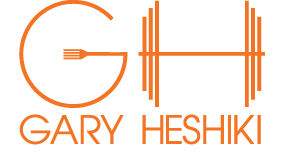The #1 Key To Healthy Knees
Photo by Andrew Tanglao on Unsplash
Every so often I receive a text or an e-mail from a friend or current client asking about knee pain. The universe is funny this way because I then proceed to receive 3-4 more messages about knee pain.
It's going to sound like I'm not answering the question but when someone has a knee issue I don't actually focus on the knee.
The only caveat is if they've suffered any trauma to the knee i.e.- they felt a "pop" when they fell or got hit directly in the knee playing pick up Basketball. THEN the knee is the site of the problem.
For the rest of us, the fact of the matter is that knee issues are typically due to problems in other areas of the body, not the knees themselves. The two most common reasons for knee pain are...
- Lack of Ankle Mobility (In particular sagittal dorsiflexion and plantar flexion)
- Poor Hip Mobility
If you said the key to correcting and preventing most knee injuries comes down to improving hip mobility...TELL THEM WHAT THEY'VE WON ROD!
They've won an all expenses paid trip to a lifetime of healthy knees!!!!!!!!
A lack of hip mobility in all planes of motion not only leads to knee pain but can also manifest itself in back pain as well. A lack of mobility in the hips also seems to coincide with an individual's glutes not pulling their weight.
Most who have patellofemoral pain do the Google search and wind up concerned about isolating the vastus medialis obliquus (VMO). Thus they end up performing hours of terminal knee extensions (TKE) and still wind up with fragile knees. Their anterior knee pain in many cases is due to soft-tissue imbalances between the stronger lateral knee structures and the weaker medial knee structures (which includes the VMO). This muscle imbalance leads to a lateral pulling of the patella into the femoral condyle which results in anterior knee pain.
Research has found that many athletes who experience patellofemoral pain had a significant decrease of strength in their hips, as much as 30%. So we need to get the posterior fibers of the gluteus medius and the gluteus maximus to fire more effectively.
HOMEWORK
- Begin by foam rolling of the lateral structures. I'd focus on the vastus lateralis (think the area on top of your leg towards the outside but still on the quad) and IT band.
- Improving general quad strength (via quad sets, leg extensions etc.) TKEs could definitely be part of the program; just understand they aren't a true isolation exercise.
- Improving the motor control and strength of the gluteals
- Stretching the quads and calves
- Not really something that influences it directly but proper program design helps a lot as well.
The Mini band warm up series. Perform 10 lateral steps in each direction, followed by a forward and backwards 45 degree step at 10 & 2 o'clock. I would repeat the series 2-3 times prior to exercise.
Many individuals lack external rotation of the hips. Try the FABER (flexion, abduction, external rotation) test yourself by sitting down tall on a chair and place your foot on your other leg's knee and see if you can get that thigh to parallel to the floor. Most people end up with their leg hiked up like chicken wing. You can perform the actual test if you have a friend who you trust won't tickle you when they try to hold your hip down.
The pigeon pose which is taken from yoga is one of the best static stretches for helping to open up the hips. The biggest takeaway from this movement isn't so much to mimic the pose but to also be able to square your body, hips and shoulders, so that you're not stressing your back or your knee too much. Elevate the front knee with pads until you can get to the floor as shown.
Integrating all this into movement prep will be the squat to stand. If you can properly pull yourself down into the squat position, lifting the arms up and then stand without compensating; you'll be well on your way to achieving your fitness goals.
NOTE: No two knee problems are identical thus you should listen to your body before plotting course on a corrective solution. I believe you should seek professional help if you can't figure out what's going on.
And of course the only thing I ask of you is if any of this information was useful or insightful to please share this with a friend whom this information may be able to help.



